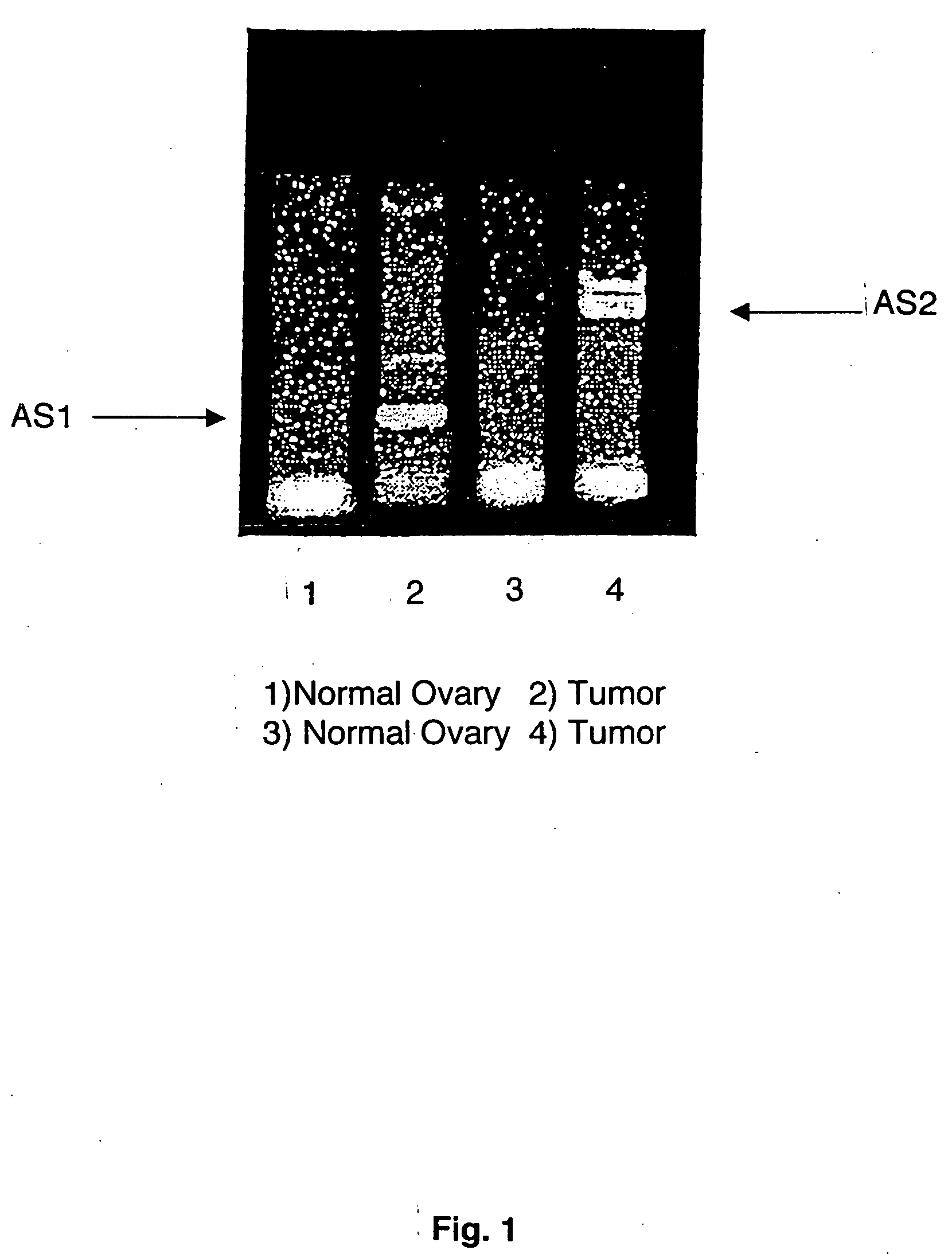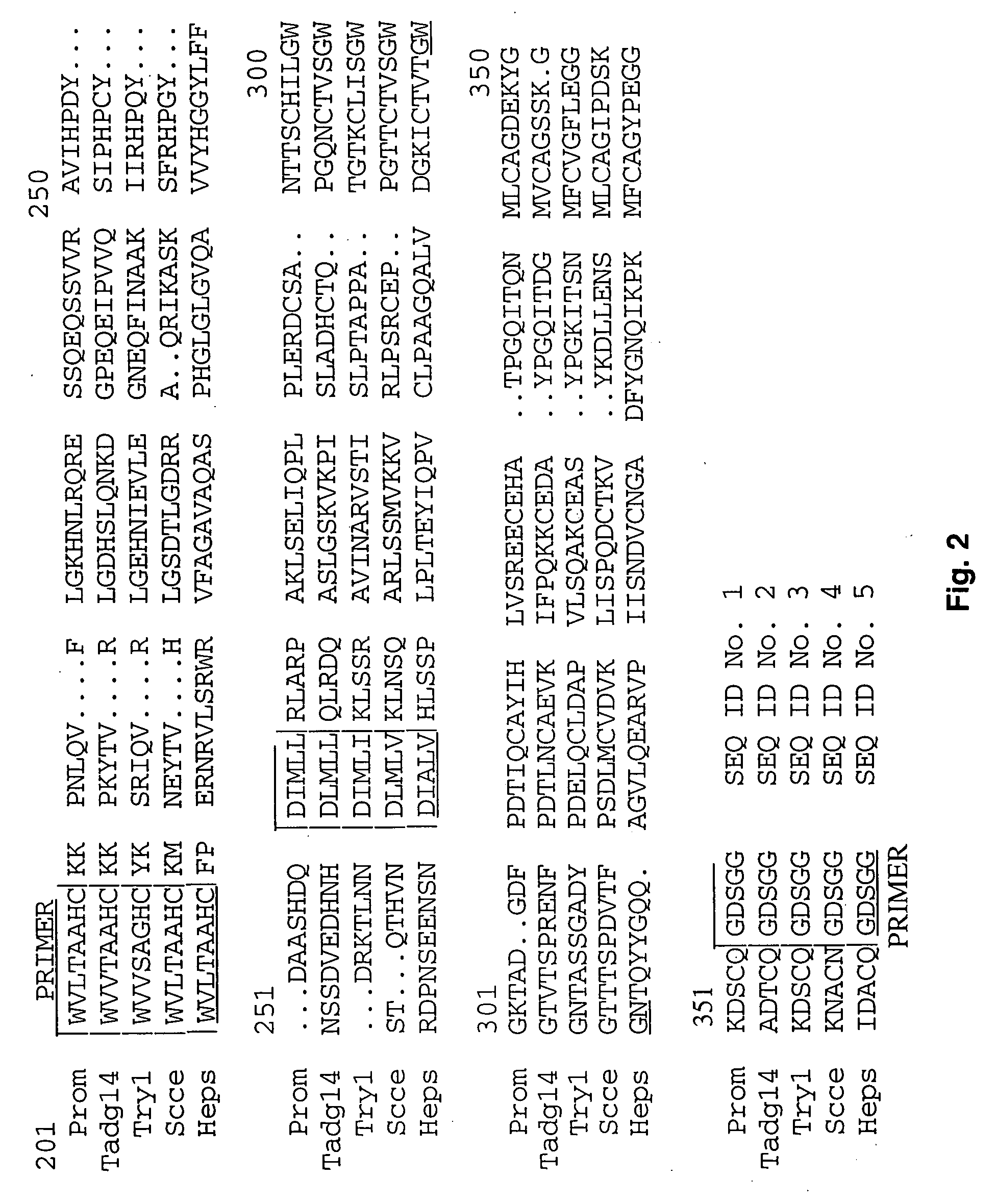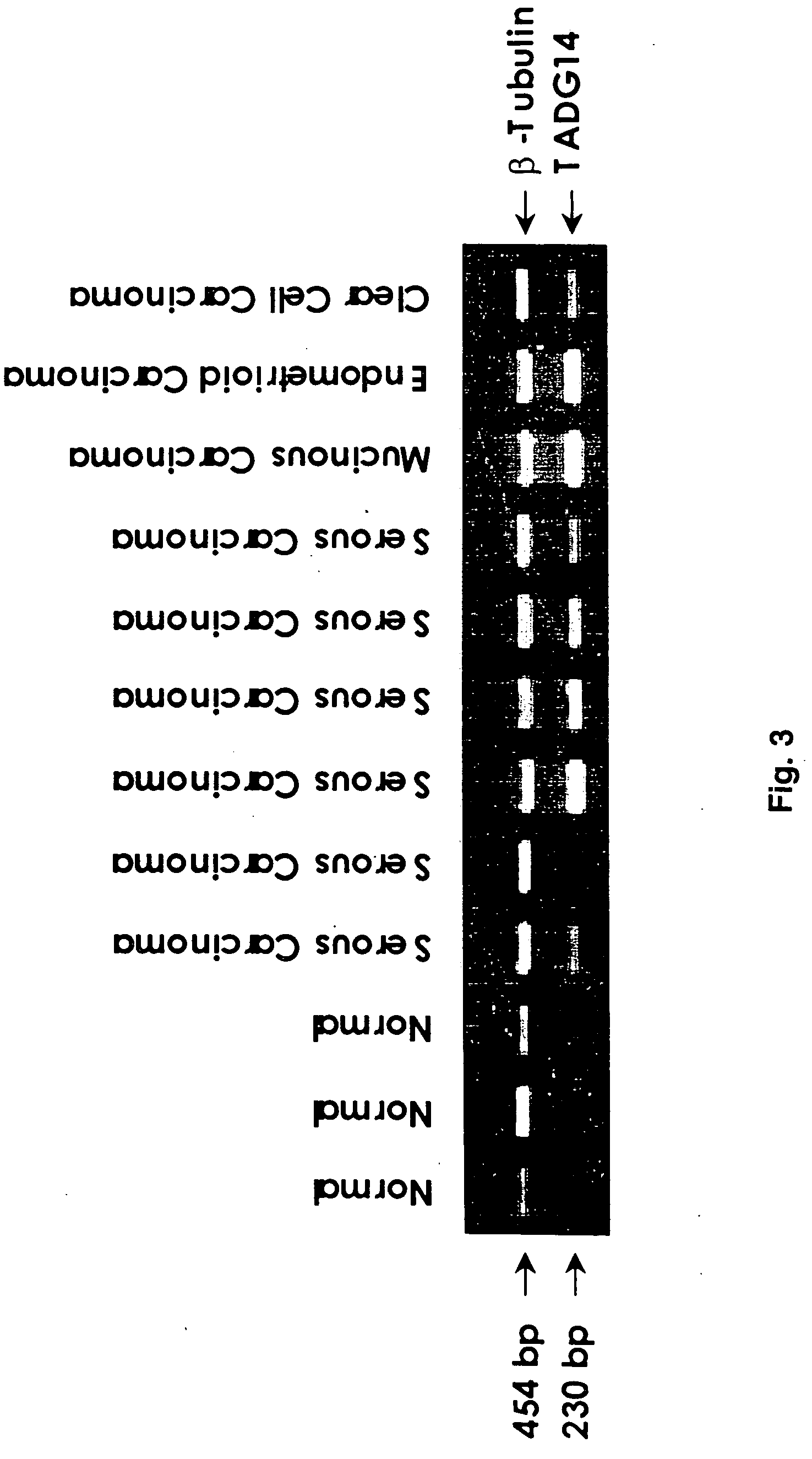Extracellular serine protease
- Summary
- Abstract
- Description
- Claims
- Application Information
AI Technical Summary
Benefits of technology
Problems solved by technology
Method used
Image
Examples
example 1
Tissue Collection and Storage
[0085] Upon patient hysterectomy, bilateral salpingo-oophorectomy, or surgical removal of neoplastic tissue, the specimen is retrieved and placed on ice. The specimen was then taken to the resident pathologist for isolation and identification of specific tissue samples. Finally, the sample was frozen in liquid nitrogen, logged into the laboratory record and stored at −80° C. Additional specimens were frequently obtained from the Cooperative Human Tissue Network (CHTN). These samples were prepared by the CHTN and shipped to us on dry ice. Upon arrival, these specimens were logged into the laboratory record and stored at −80° C.
example 2
mRNA Isolation and cDNA Synthesis
[0086] Messenger RNA (mRNA) isolation was performed according to the manufacturer's instructions using the Mini RiboSep™ Ultra mRNA isolation kit purchased from Becton Dickinson (Cat. NO. 30034). This was an oligo(dt) chromatography based system of mRNA isolation. The amount of mRNA recovered was quantitated by UV spectrophotometry.
[0087] First strand complementary DNA (cDNA) was synthesized using 5.0 mg of mRNA and either random hexamer or oligo(dT) primers according to the manufacturer's protocol utilizing a first strand synthesis kit obtained from Clontech (Cat. NO. K1402-1). The purity of the cDNA was evaluated by PCR using primers specific for the p53 gene. These primers span an intron such that pure cDNA can be distinguished from cDNA that is contaminated with genomic DNA.
example 3
PCR Reactions
[0088] Reactions were carried out as follows: first strand cDNA generated from 50 ng of mRNA will be used as template in the presence of 1.0 mM MgCl2, 0.2 mM dNTPs, 0.025 U Taq polymerase / ml of reaction, and 1× buffer supplied with enzyme. In addition, primers must be added to the PCR reaction. Degenerate primers that may amplify a variety of cDNAs are used at a final concentration of 2.0 mM each, whereas primers which amplify specific cDNAs are added to a final concentration of 0.2 mM each.
[0089] After initial denaturation at 95° C. for 3 minutes, thirty cycles of PCR are carried out in a Perkin Elmer Gene Amp 2400 thermal cycler. Each cycle consists of 30 seconds of denaturation at 95° C., 30 seconds of primer annealing at the appropriate annealing temperature*, and 30 seconds of extension at 72° C. The final cycle will be extended at 72° C. for 7 minutes. To ensure that the reaction succeeded, a fraction of the mixture will be electrophoresed through a 2% agarose / ...
PUM
 Login to View More
Login to View More Abstract
Description
Claims
Application Information
 Login to View More
Login to View More - R&D
- Intellectual Property
- Life Sciences
- Materials
- Tech Scout
- Unparalleled Data Quality
- Higher Quality Content
- 60% Fewer Hallucinations
Browse by: Latest US Patents, China's latest patents, Technical Efficacy Thesaurus, Application Domain, Technology Topic, Popular Technical Reports.
© 2025 PatSnap. All rights reserved.Legal|Privacy policy|Modern Slavery Act Transparency Statement|Sitemap|About US| Contact US: help@patsnap.com



